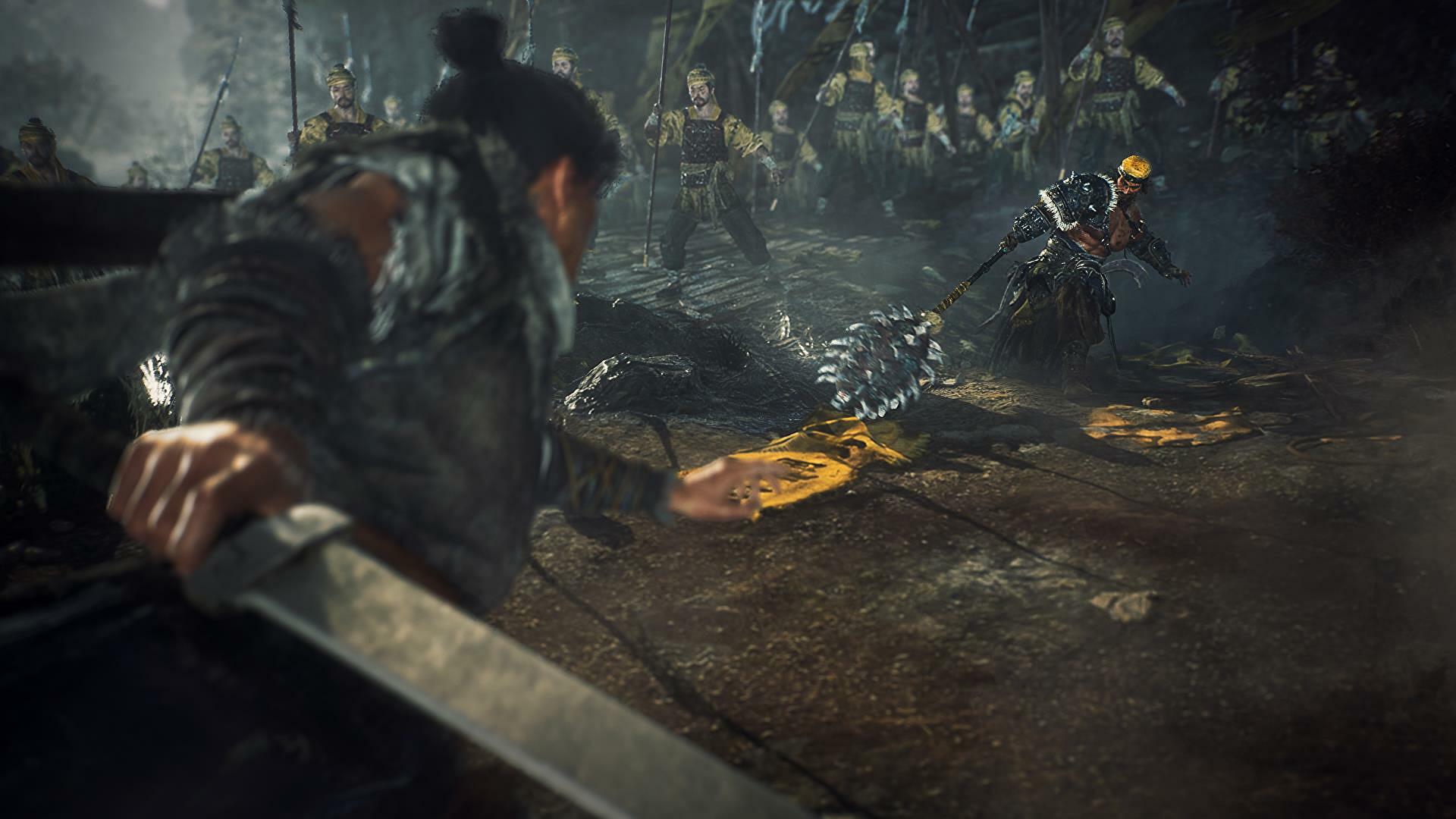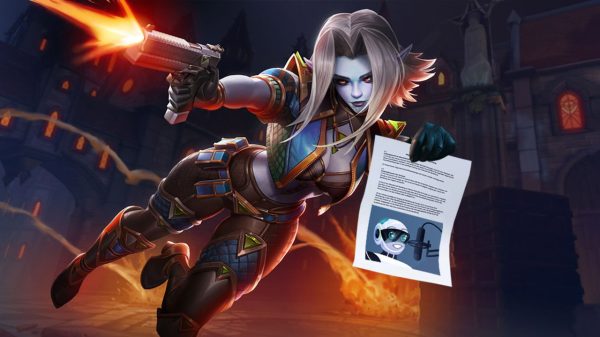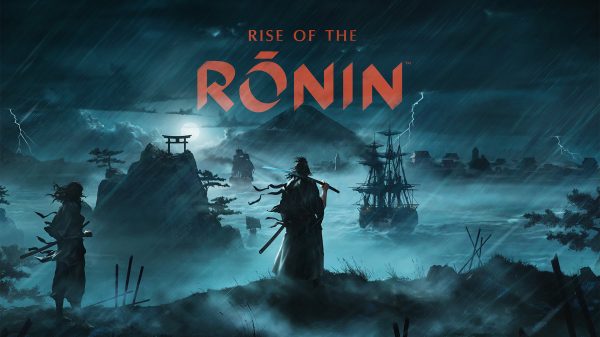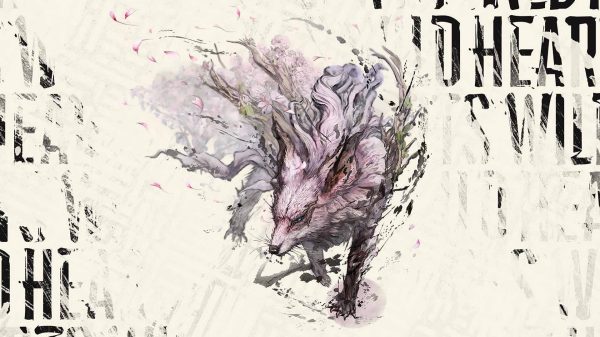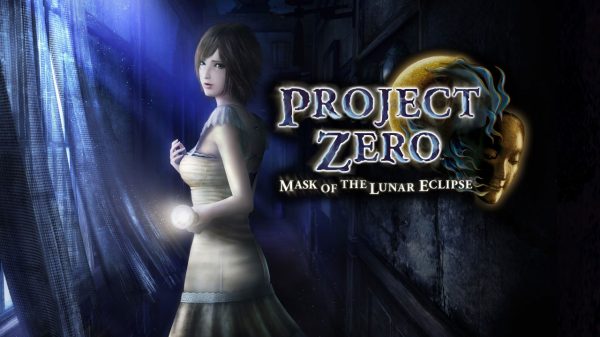Few franchises have been imitated as often as those that make up the Soulsborne phenomenon (or is it Soulsbornring now?), and even fewer have done it as successfully as Team Ninja with their foray into the hardcore hack and slash genre, in the form of Nioh. A brilliant new IP that captured the brutal difficulty and demanding mechanics of FromSoft’s various masterpieces, but one which established a distinct flavour of its own, Nioh proved you could imitate and innovate at the same time. Its sequel Nioh 2 turned up every aspect of the original to 11, and stands comfortably shoulder-to-shoulder with the titans of this hallowed genre. Enter Team Ninja’s latest take on the masochism simulator Wu Long: Fallen Dynasty, which given the pedigree of the developer at the helm has no small amount of anticipation surrounding it. So does Fallen Dynasty rise to the occasion, or is it a case of Wo Long, and thanks for all the fish?
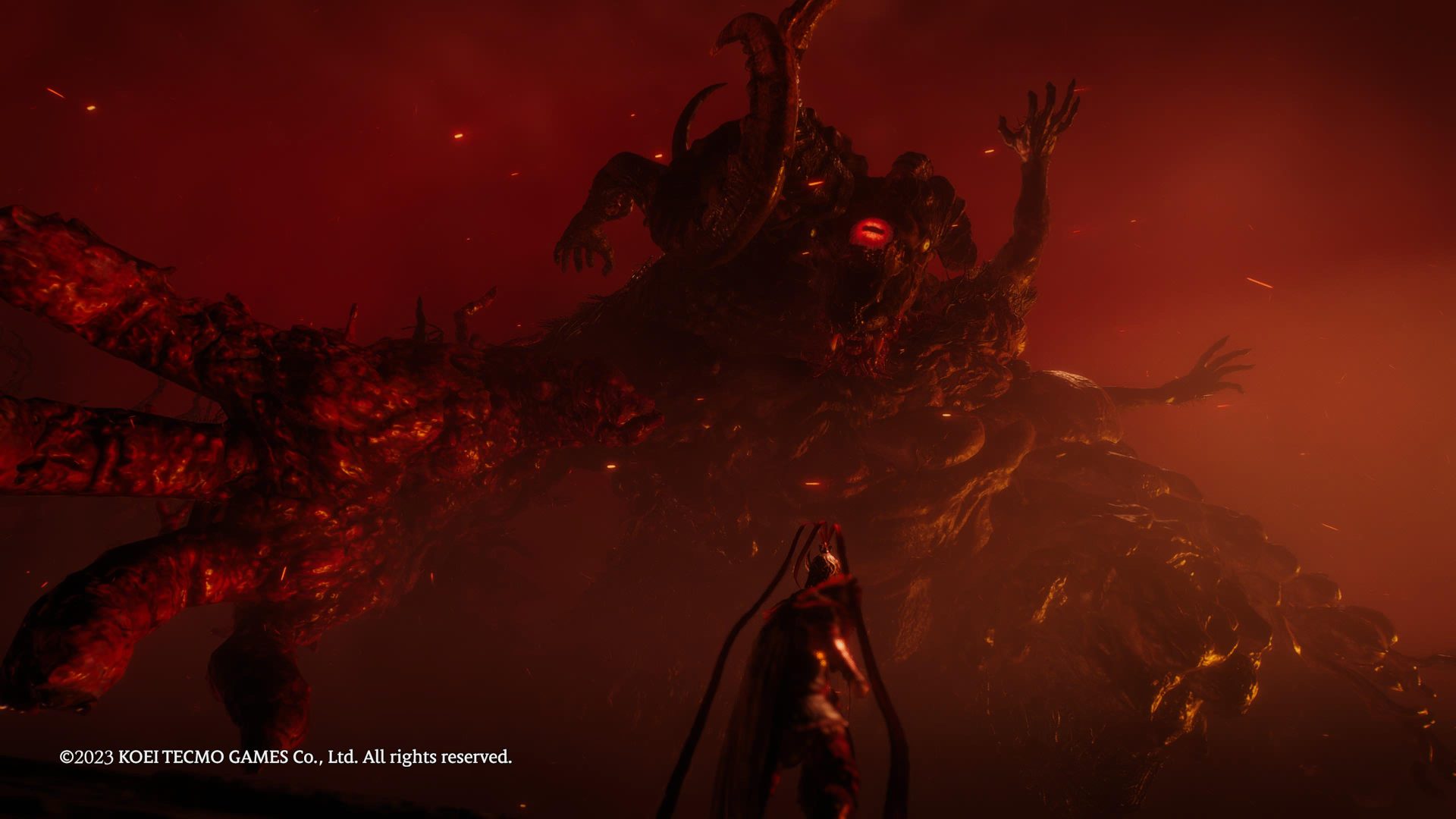
If there is a God then why does this thing exist?
Wo Long is a dark fantasy riff on the oft-romanticised historical period surrounding the fall of the Han Dynasty in China around the turn of the third century. Beginning with the Yellow Turban Rebellion and ending with the splitting of China into the famous Three Kingdoms, this extremely bloody piece of ancient history has been the subject of many a game, including my only brush with the Dynasty Warriors franchise. Wu Long takes loose inspiration from the actual historical events and major figures that were pivotal in that tumultuous epoch, but also weaves in a fantastical tale of an evil Taoist who spreads death and discord in order to harvest a powerful substance that corrupts the hearts of men. Or perhaps ancient China was actually awash with demons, who’s to say?
Beginning the game as a mute, nameless militia fighter railing against the Yellow Turban uprising, you are brought back from the dead during a fiery village ransacking by a mysterious blindfolded figure after an act of heroism inspires him to let you have another crack at it. Very quickly you become entwined in the devious political machinations of those vying for power and control at bitter end of the Han Dynasty, and must pit yourself against the demonic forces that corrupt the land and sow the seeds of chaos on both sides. Alongside famous figures like Cao Cao, Guan Yu and Zhang Fei, you must rise up and become the mute, nameless hero that China needs.
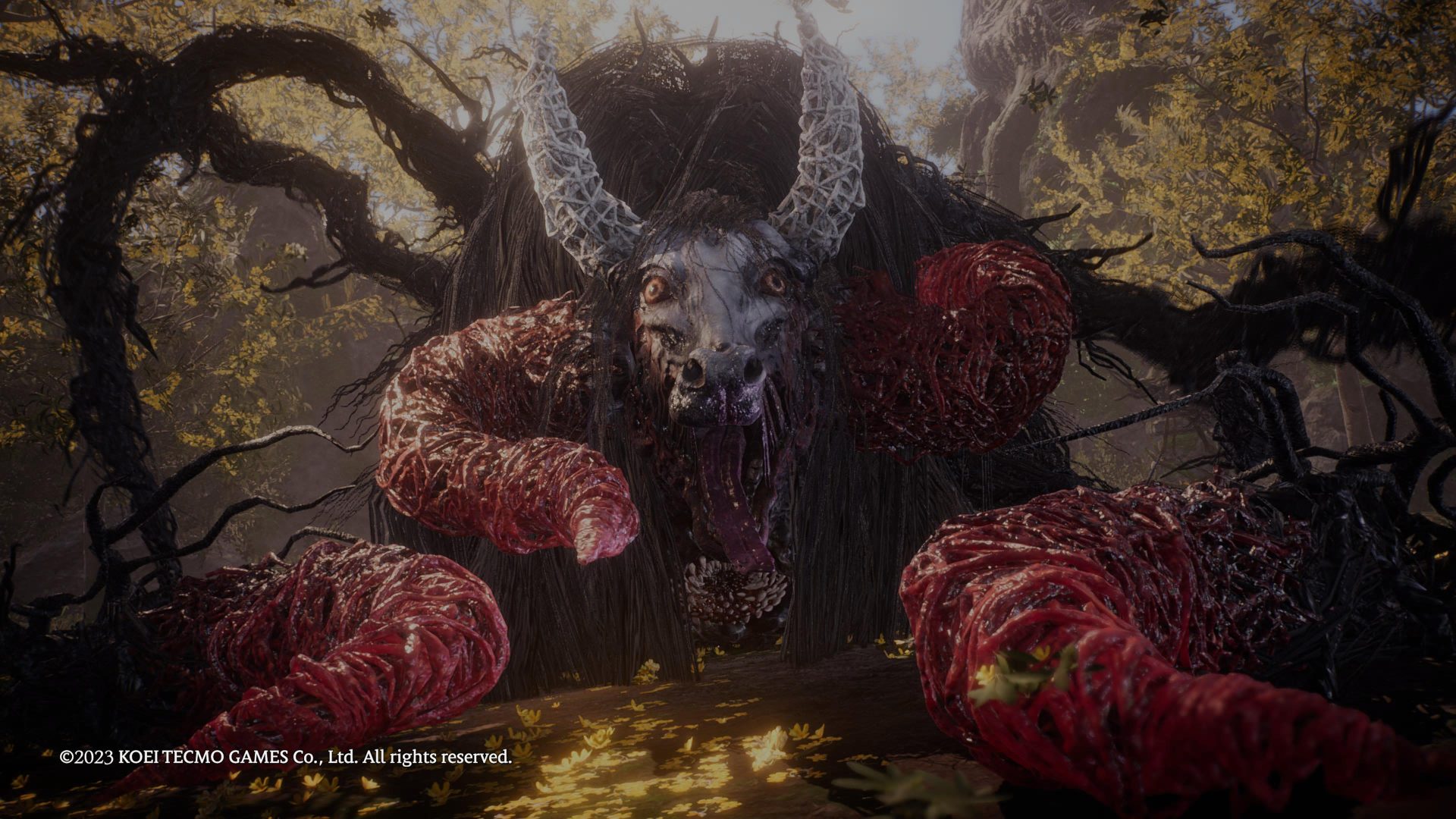
Mad cow disease is no laughing matter
The story is largely what you would expect, with heavy dollops of melodrama and a generous drizzling of moral musings about power and the concept of doing the wrong thing for the right reasons. Is it acceptable to ghost your family and ingest a powerful elixir that turns you into a demonic hell beast so you can take down the bloke who is exploiting that same elixir in order to further his nefarious plans? This is but one of the questions which now keeps me up at night. Jokes aside, it’s an enjoyable supernatural romp through the time period, and I’m sure some of the ancient historians out there will get a kick out of how the developer has interpreted the events and woven it into the story. In the context of the narrative, the silent protagonist decision is perhaps not entirely wise, given how the game simultaneously puts you at the front and centre of the political intrigue and associated diplomacy at halberd-point, but robs you completely of any agency or input aside from stabbing things until they cease to become a problem. Taken in its context though, it’s a fun and slightly silly adventure that’s easy to just let wash over you.
Despite the general enjoyable nature of the over-the-top tale, I don’t think I can give all the characterisations a pass. There is only one female character of any import in the entire story, with most members of the fairer sex being relegated to the role of set dressing. Perhaps this is reflective of the time period, but the fact the only key female is also given a creepily subtle bosom bounce beneath her robes (it’s certainly not Dead or Alive Beach Volleyball but it’s definitely there, I checked) is a little on the nose even for this cishet red-blooded male.
Let’s get this out of the way. Comparisons to Nioh 2 are inevitable, fair and unfortunately in many cases unfavourable. Even though Wo Long has ditched Japan for China, the visual style is incredibly similar (and still superb in a great many ways I should add), and some of the core ideas such as bonding with powerful spirit animals housed in your comrades and foes and wielding their power make a reappearance. Hell, even kicking big old urns of water onto fires to clear a path makes a return. The slick, flashy animations and vibrant colour palette drenched in purples and reds will instantly conjure memories of the most recent Nioh entry, but FromSoft has gotten away with several games featuring a very similar dark medieval setting and no one’s taken umbrage with that, so perhaps we should let Wo Long just do its thing.
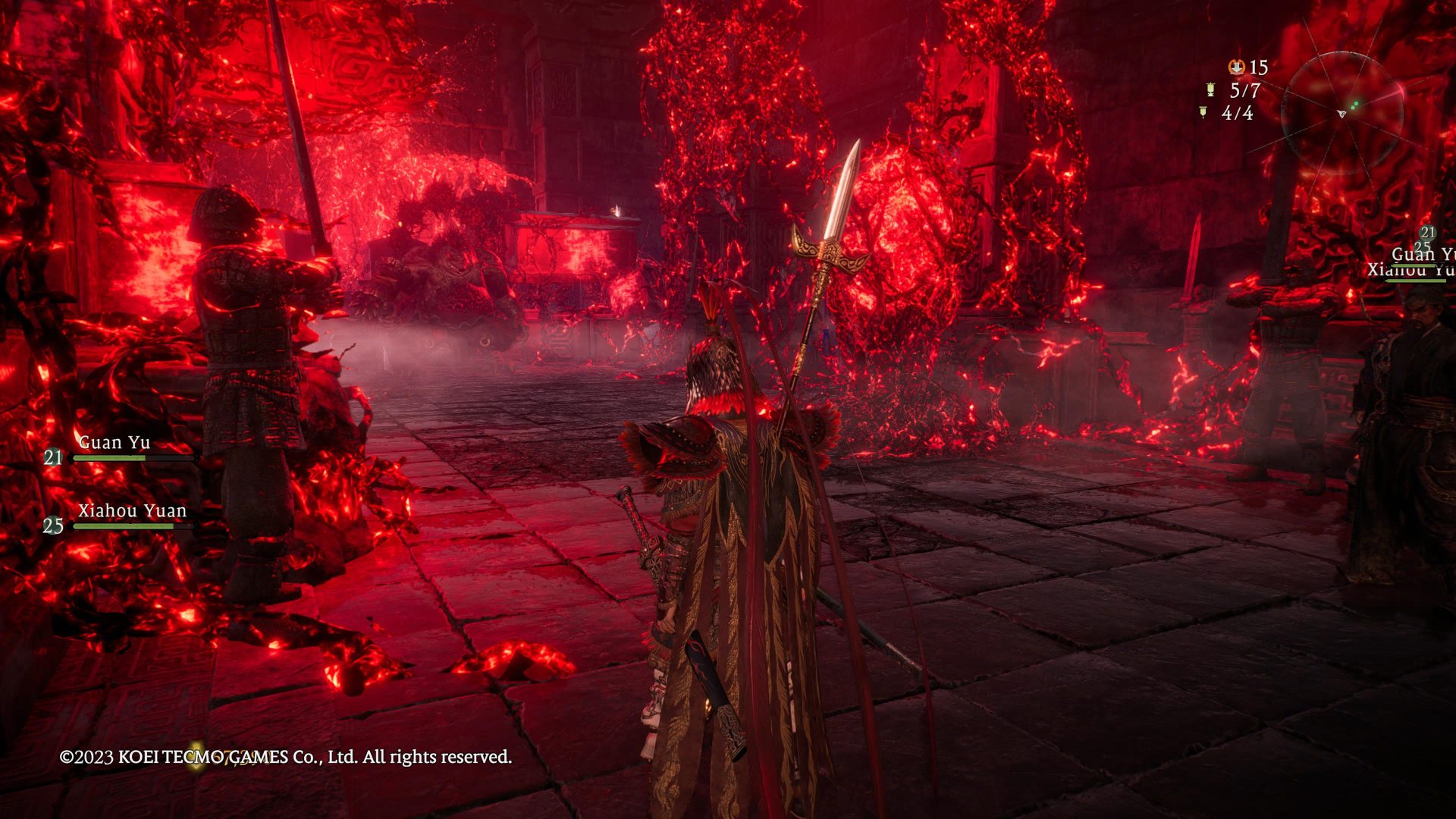
Surely these ominous statues in this angry red chamber won’t suddenly come to life
As a third-person hack and slash RPG, Wo Long does set itself apart mechanically in a few important ways, and while I think some depth and variety is lost along the way, there are several interesting ideas kicking around. Principal among these is the Spirit gauge, common to both you and your enemies alike. Two main actions will fill your Spirit gauge from its default position of zero – attacking and deflecting. There is no conventional stamina bar, and you can physically attack the enemy to your heart’s content, and successful normal attacks will slowly raise your spirit. If you manage to deflect an enemy’s attack by dodging at the perfect moment you will also gain Spirit, while simultaneously depleting theirs and opening them up for a juicy counterattack. You can bank this Spirit and then unleash the surplus in a powerful heavy Spirit attack, or use it as a resource to harness weapon special skills (called Martial Arts) and spells. What makes the system particularly interesting is that Spirit can go into a deficit, so if you simply spam magic and Martial Arts, or dodge outside of the context of deflecting, your spirit gauge will dip to the lower extreme, and a single blow at this point from an enemy will leave you stunned and begging for a smackdown. This Disrupted Spirit state can also be exploited against enemies too, and much of your battle tactics will involve depleting the enemies’ Spirit with all the tools at your disposal while maintaining your own, in order to eventually deliver a devastating coup de grace.
The other key mechanic is the Morale system, which is perhaps a far more complex thing to describe on paper than it is to actually experience. Essentially, each mission begins with you having a Morale rank of zero. Morale is an indicator of your damage scaling against enemies, and is measured against their own specific Morale ranks. An enemy who is several ranks above you will hit like a freight train, and conversely you’ll feel like your katana has all the lethality of a paper fan in response. You gain Morale ranks by simply killing enemies, but in true Soulsborne style, if you die that rank goes all the way back to zero, and it’s back to attempting to batter enemies with a paper fan. Luckily, you can plant Battle Flags at certain checkpoints (which function analogously to a bonfire/lantern/shrine, you get it) which raise your Fortitude rank. When you die, your Morale rank will still drop, but it won’t drop below your Fortitude rank. It bears mentioning that you level up independently of this system in a traditional way, spreading points across five key attributes that affect things like attack power, health, spirit gain and access to elemental magic spells; the Morale system simply represents a scaling factor.
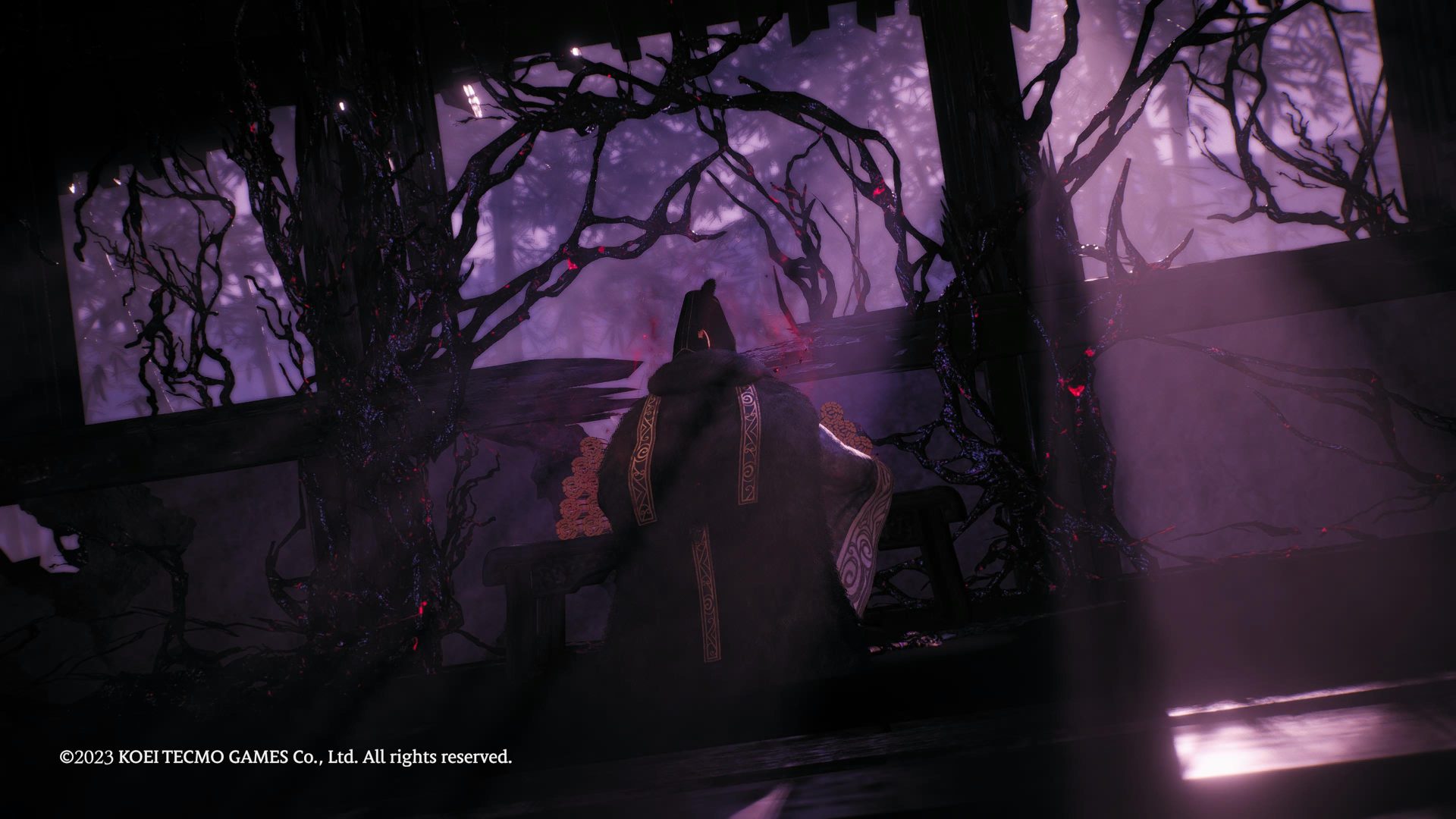
I don’t think this guy is writing his Christmas wishlist…
Given the developer, it should be no surprise that the combat is also fast and exceedingly smooth, with stylish animations for the litany of weapon attacks and their unique Martial Arts, plus plenty of bloodshed and wet thwacking noises to keep the pugilists satiated.
One key aspect of Wo Long that struck me was that despite all the mechanics and the outward appearance of the signature tough-but-fair gameplay that is the beating heart of the hardcore hack and slash, the game actively encourages the neutering of its own difficulty. This is largely down to the ability to have companions accompany you on missions. The vast bulk of the main missions simply gift you one or two AI companions, who are more than capable in a fight and can draw aggro while you skulk in a corner throwing thunder from afar. In missions where they are absent, you can summon them at a Battle Flag with a relatively abundant resource. Purists will simply say not to use them, but it’s impossible to resist their allure. On top of that, the more you use them, the more powerful they become, and eventually they’ll also give you their rare armour and weapons. How can I say no to that?
I breezed through the main missions largely on the back of being able to rely on my buddies when things got too hot, and the vast majority of bosses fell on the first try with relatively little effort. The end effect of this companion system is that you need not lean too hard into the nuances of the combat mechanics or even worry significantly about losing your Morale rank when taking on enemies more powerful than you, as it’s simple enough to blunt force your way through. I’m not sure whether this lowering of the bar is perhaps an olive branch to those who shy away from this genre because of its punishing nature, and I do welcome accessibility options in any form, but I’m also not sure the game has struck the correct balance of difficulty to appease all camps. A harder difficulty is unlocked after the credits which is certainly a bit spicier, and some missions force you to fly solo, but veterans of the genre might be left wanting a little more.
Also kneecapping the difficulty is some truly terrible enemy AI. From the lowliest foot soldier to the mightiest hulking fire demon, the awareness level of these guys is akin to that of someone wearing over-ear noise-cancelling headphones, listening to Enya at full bore while crossing the street with their head buried in their phone. That’s actually too generous, that same person jamming away to Sail Away is also wearing horse blinders. Stabbing enemies from behind or striking them from above does huge amounts of damage (and lowers their Morale rank into the bargain), and is made all the easier by the fact that they won’t see you unless you approach them directly from the front and ask where the nearest library is. I will admit it was quite fun to dismantle enemy camps systematically by sneaking along rooftops before swooping down to deliver violent death from above, but it felt a lot more like exploitation rather than anything else. As if this wasn’t comical enough, they all suffer from TLOU syndrome as well, where they’ll eventually spot you if you are careless enough, but they will never see your companions despite the fact they are practically performing the haka in front of them.
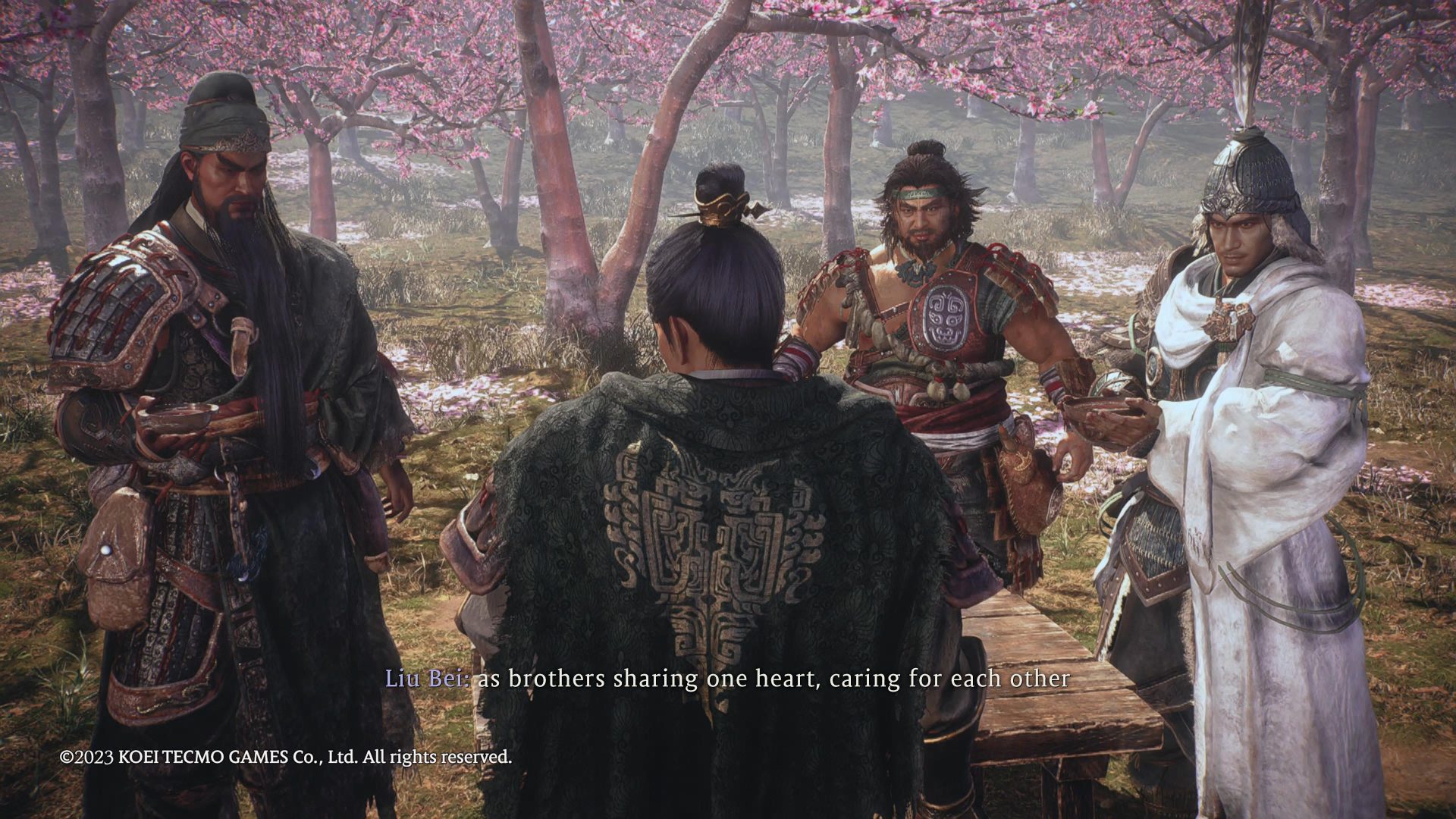
True bros express their love openly
I’ve been harsh on aspects of this title, but despite some objectively valid criticism, the game is still fun and engaging. Carefully exploring the secret nooks and crannies of each mission’s battlefield is a blast and will always reveal (mostly) helpful items as well as an extremely healthy variety of armour and weapons to muck around with. The same addictive looter style of gameplay that Nioh has become synonymous with returns here and remains awesome, and you’re treated with a near constant stream of rewards for your effort. A lot of the stuff is pure and utter junk that is destined for the salvage pile before you even pick it up, but when a rare weapon drops (a familiar colour-coded system will tell you if you’ve got a winner), it hits just right. I do wish the game had better explained its embedding mechanic (where you readjust the special effects of weapon and armour to align with your playstyle) before I stumbled across it and fumbled like a child for an hour, but building out and upgrading my arsenal made the journey feel worthwhile. Given the developer, it should be no surprise that the combat is also fast and exceedingly smooth, with stylish animations for the litany of weapon attacks and their unique Martial Arts, plus plenty of bloodshed and wet thwacking noises to keep the pugilists satiated.
Final Thoughts
Wo Long was always destined to be judged in the long shadow of the exceptional Nioh 2, which here is slightly to its detriment. It does an admirable job of rolling some fresh core mechanics into the now well-established hardcore hack and slash dough recipe, but accidentally only used three quarters of the required amount of yeast and then left the heat on medium. The result is a title that doesn’t quite rise like it should, and is a little doughy in the middle. Elaborate bread metaphors aside, Wo Long is absolutely a good game from a talented studio, but it falls short of being a great one.
Reviewed on PS5 // Review code supplied by publisher

- Team Ninja
- Koei Tecmo
- PS5 / PS4 / Xbox Series X&S / Xbox One / PC
- March 3, 2023



Kieran is a consummate troll and outspoken detractor of the Uncharted series. He once fought a bear in the Alaskan wilderness while on a spirit quest and has a PhD in organic synthetic chemistry XBL: Shadow0fTheDog PSN: H8_Kill_Destroy





